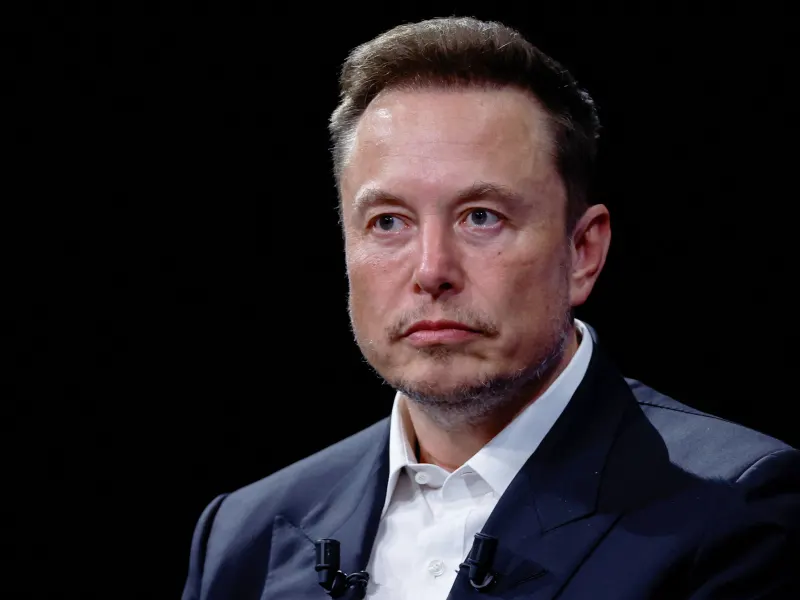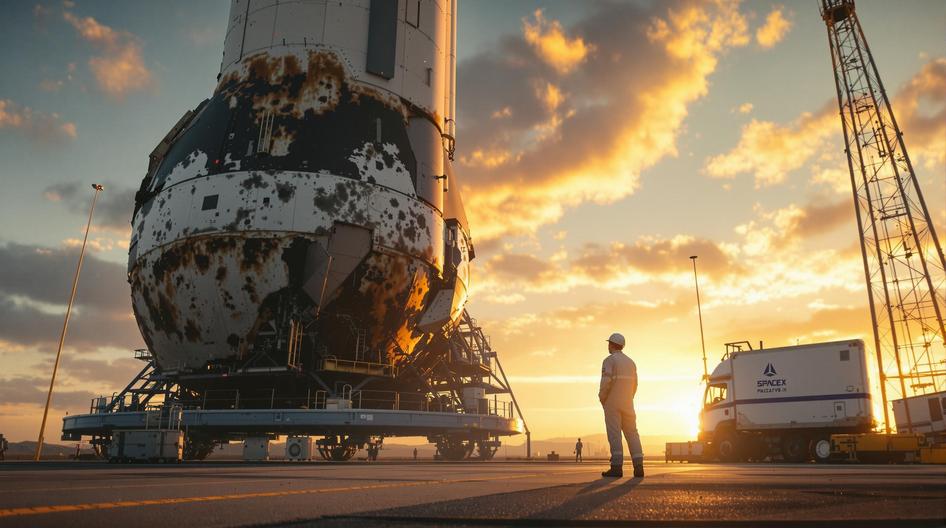
SpaceX Wins 2 Billion Golden Dome Contract as Defense Tech Competition Intensifies
SpaceX just added another high-stakes project to its launch manifest. The company secured a 2 billion dollar Pentagon contract to build satellites for the Golden Dome missile and aircraft tracking network, a deal first surfaced in a Wall Street Journal report. The program echoes the real-time interception model behind Israel’s Iron Dome, only this time the United States plans to stitch together about 600 satellites for full-spectrum coverage. Defense investors who have been tracking SpaceX’s pivot into national security work are giving the move a close look. After all, how often does an upstart launch provider get a chance to challenge decades-old military suppliers on their home turf?
Golden Dome’s Mission and Budget
Golden Dome aims to deliver constant surveillance by placing a swarm of small, networked satellites in low Earth orbit. The goal is to spot missile launches, detect incoming aircraft, and hand the data to decision makers in seconds. It is a tactical system with strategic consequences. Congress locked in 24 billion dollars of funding through 2029 in the July omnibus spending bill, according to the official Congressional analysis. That kind of multi-year commitment signals how urgent U.S. leaders consider this capability, especially as adversaries test hypersonic weapons and swarming drones. Can SpaceX deliver a constellation of that scale while meeting the Pentagon’s security requirements? The contract is a vote of confidence that it can.
Why SpaceX Rose Above Traditional Contractors
SpaceX brings reusable rockets, high-volume satellite manufacturing expertise, and an existing relationship with U.S. government agencies including NASA and the Department of Defense. The company already flies Transporter rideshare missions that deploy dozens of small satellites in a single launch, a capability that fits the Golden Dome playbook. That background helps explain why the Pentagon turned to Musk’s team despite a crowded field of established defense giants. Readers wanting more context on SpaceX’s defense posture can dive into our deep-dive on the contract’s market impact.
Leadership History and Political Friction
Elon Musk’s ties to Washington grew during President Donald Trump’s second term. Musk led an audit of federal agencies while serving as head of the Department of Governmental Efficiency, giving him direct exposure to procurement systems he now relies on for contracts. The alliance fractured later over disagreements about the size of the spending bill that ultimately funded Golden Dome. That context matters because it underscores the transactional nature of federal tech partnerships. Does political turbulence jeopardize execution? Not immediately, but it can shape oversight intensity and future renewals.

Other SpaceX Defense Programs Already in Motion
Golden Dome is not SpaceX’s first military communications effort. The company is already building Milnet, a secure satellite-based network intended to give soldiers encrypted links on the battlefield. It also operates a second program that tracks ground vehicles from orbit. Together, these initiatives portray SpaceX as more than just a launch provider. They make the company a systems integrator that meshes hardware, software, and AI-enabled telemetry. For technologists mapping the broader defense data stack, edge AI hardware innovations are a crucial part of the story because they enable satellites to process sensor feeds before the information reaches analysts.
How Intuitive Machines Fits Into the Picture
SpaceX wasn’t the only company in the headlines. Intuitive Machines, the Houston-based lunar systems developer, earned an 8 million dollar contract extension from the U.S. Air Force Research Laboratory. The work explores how nuclear power can support deep-space missions, and the news lifted its shares 4.9 percent to 11.93. The update came through an Intuitive Machines briefing, and it underscores how federal agencies spread bets across specialized operators. When nuclear reactors become part of the energy mix for spacecraft, satellite constellations like Golden Dome could gain high-powered relays in cislunar space. That is speculative today, yet the pieces are coming together faster than many expected.
The Competitive Field and Their Next Moves
Anduril, Palantir, Northrop Grumman, Lockheed Martin, and Raytheon all expressed interest in profiting from Golden Dome. Some pitched joint ventures with SpaceX, while others proposed complete alternatives. Investors can review their positioning in Golden Dome competition coverage. Palantir in particular tried to leverage its AI-driven targeting software, and its market activity remains closely watched through the Palantir quote page. These companies are unlikely to sit idle. Northrop Grumman’s profile at Investors.com shows a contractor deeply entrenched in missile defense, and Lockheed Martin still owns the high-ground with long-range sensors. Expect protests, lobbying campaigns, and perhaps follow-on awards once SpaceX begins delivering early satellites.
Market Reaction and Sector Momentum
The aerospace and defense sector has climbed 33 percent year to date, according to MarketSurge data. That growth stems from a mix of solid earnings, rising geopolitical tension, and the infusion of AI into nearly every new platform. Are traders reaching a point of exhaustion? The steady cadence of contracts suggests not yet. Analysts at Investor’s Business Daily news hub noted that Palantir and Robinhood headlines continue to influence sentiment, keeping tech-centric defense names in focus. If you track broader AI momentum, Nvidia’s trillion-dollar rally offers a parallel story about how computation power shapes government and commercial spending alike.
Infrastructure, Cybersecurity, and the Risk Landscape
Golden Dome isn’t just about hardware. The constellation will generate a firehose of telemetry that must be secured, analyzed, and routed into command systems. Defense planners are already weaving redundancy into power grids, cloud environments, and ground stations. Curious how these layers interact? Our coverage on cyber-physical protection shows the overlap between space assets and terrestrial infrastructure. Engineers will lean on encryption, zero-trust architectures, and automated incident response. They must also guard against debris, radio-frequency interference, and weather events that can disrupt low Earth orbit satellites.
Starlink Lessons and Operational Execution
SpaceX’s Starlink broadband network gives the company a practical playbook for running large constellations. Thousands of Starlink satellites already stream data from orbit, and every launch teaches lessons about deployment speed, orbital slot management, and collision avoidance. The parallels are clear in our analysis of Starlink’s mega constellation. Golden Dome will demand even tighter control, since national defense tolerates no downtime. Can SpaceX match Starlink’s operational tempo while meeting stricter military standards? The answer will hinge on how the company integrates classified payload processing and coordinates with existing missile warning systems.
Why Golden Dome Matters for Developers and Analysts
Software developers, data scientists, and cybersecurity professionals should pay attention because Golden Dome could open new tooling requirements. Imagine building analytics platforms that ingest sensor feeds, identify anomalies, and cue interceptors automatically. That future aligns with themes we mapped in our automation and AI workforce report. Meanwhile, data fusion across space and terrestrial systems will influence smart city planning, autonomous vehicle coordination, and emergency response. The cross-pollination is real. Want another angle? Satellite-to-ground innovation feeds the rapid growth charted in our smart networks briefing, where defense-grade communication techniques often migrate into commercial telecom gear.
What Comes Next
SpaceX now has to finalize satellite designs, align launch manifests, and coordinate with military testing teams. Rivals will scrutinize every milestone, hoping for delays that could reopen bidding. Investors should keep an eye on procurement updates, Federal Acquisition Regulation filings, and potential add-on contracts. Could Anduril or Palantir land software subcontracts even without the primary award? Absolutely. Defense agencies routinely split workloads to hedge risk. Citizens also deserve transparency about how the surveillance data will be governed. After all, who decides when a suspected threat becomes actionable intelligence?
Golden Dome also hints at a larger shift where commercial space operators supply the backbone of national defense. If that trend holds, expect more public-private agreements, maybe even spin-offs that segregate classified operations from civilian services. The Pentagon’s choice of SpaceX sends a signal to the entire industry. Agility, vertical integration, and launch cadence now matter as much as decades of procurement history. That is a challenge incumbents can meet, but only if they rethink how they build and deliver complex systems.
The takeaway is straightforward. Golden Dome isn’t just another contract; it’s a blueprint for how the United States plans to blend commercial innovation with military doctrine. SpaceX has a chance to prove that rapid iteration and reusable rockets can protect national airspace. Competitors get a fresh reason to accelerate their own modernization programs. And for technologists, the program provides a living laboratory where space infrastructure, AI, and cybersecurity converge. How often do we get to watch that play out in real time?






























































































